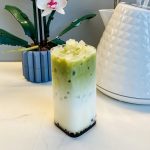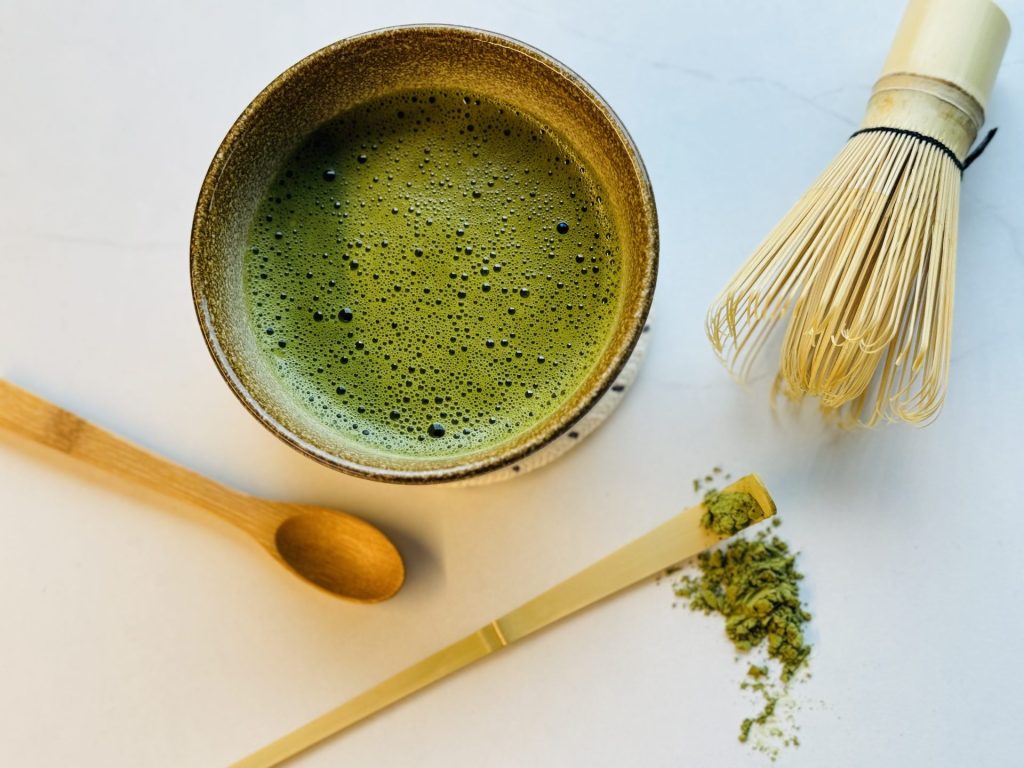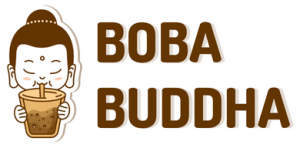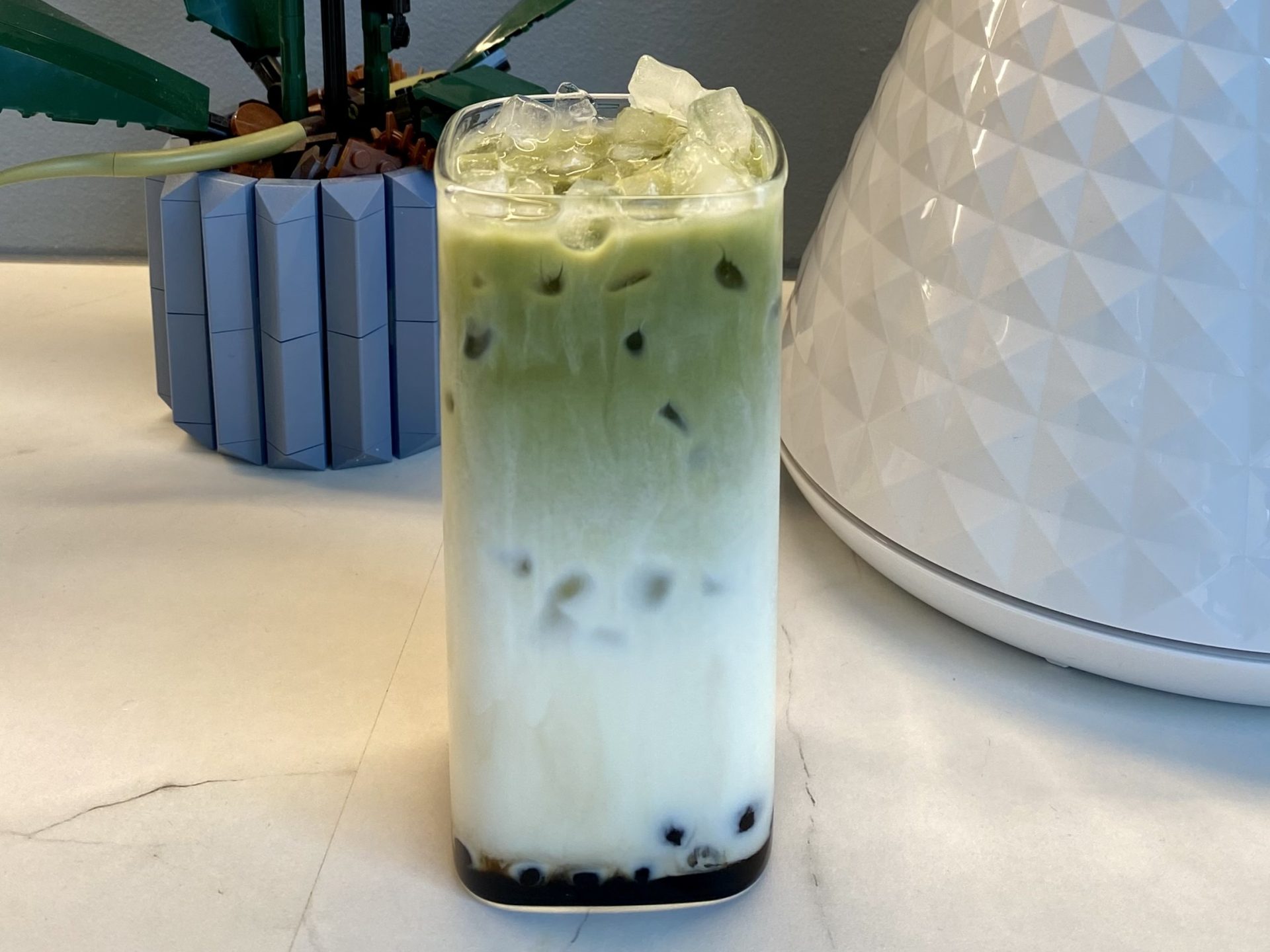The subtle sweetness and bright green hue make matcha milk tea a favorite at boba shops and coffee shops. Make it at home with this recipe and simple ingredients such as matcha powder, hot water, ice, sugar, and milk. For an extra treat try it with tapioca pearls!
My recipe can be made in a few minutes with minimal ingredients. Try this delicious iced matcha milk tea at home and customize the sweetness to your taste. Watch me make this refreshing drink below:

Matcha Milk Tea with Boba Pearls
- Total Time: 10 minutes
- Yield: 16 ounces 1x
Description
Enjoy the unique flavor and health benefits of this simple match milk tea recipe with boba. Experiment with different milk and sweetener combinations until you find your favorite blend.
Ingredients
- 1 tsp matcha green tea powder
- 1/4 cup boiling water
- 1 tbsp sweetener of choice
- 1 tsp vanilla (optional)
- 1 cup milk or non-dairy substitute
- 1/2 cup quick-cooking tapioca pearls in brown sugar syrup (optional)
- 1 cup ice
Instructions
- Warm your matcha bowl with hot water. Rinse well and dry.
- Place a fine mesh sieve over the bowl, and add the matcha powder to the sieve.
- Use a spoon to sift the matcha powder through the sieve.
- Add hot water to the bowl.
- Mix the matcha and water with a bamboo whisk (chasen) until you get a frothy consistency at the top. Allow it to sit and cool (or place in a refrigerator to speed up the process.)
- In the meantime, make your quick-cooking tapioca pearls per the package directions. Most will only take a few minutes to boil, rinse, and mix with brown sugar.
- Once everything is cool, assemble the drink. Place tapioca pearls at the bottom of the glass and fill the glass with ice. Pour in any sweeteners and vanilla (as desired). Add your milk or dairy substitute, and top with the frothy matcha. Add a boba straw and give it a stir.
- Sit back, relax, and enjoy your homemade matcha with boba!
Notes
The best milk substitutes are oat milk, almond milk, and soy milk but use the one you like best.
Honey is my favorite sweetener for this recipe but you can also use brown sugar syrup, maple syrup, agave, or coconut sugar.
- Prep Time: 5 minutes
- Cook Time: 5 minutes
- Category: Drinks
Keywords: iced matcha latte, green tea latte, matcha latte with boba, boba tea
How to Whisk Matcha with a Japanese Whisk (Chasen)
I recommend using a traditional Japanese whisk or chasen to achieve the perfect consistency for matcha. I bought mine as part of a matcha set. I show you how to use your chasen here:
What Does Matcha Milk Tea Taste Like?
Matcha on its own is an explosion of unique flavors; it is bitter, vegetal, nutty, grassy, and slightly sweet. However, the umami flavor is what makes it stand out. It is similar to green tea but with more of a punch.
When combined with milk and sweetener, the flavors are subdued. It takes on a creamy, earthy flavor. The drink’s sweetness depends on how much honey, sugar, or syrup you add. Sweeten slowly; you don’t want to cover up these exciting flavors.
Health Benefits of Matcha Tea
Matcha green tea has several health benefits (hence its overwhelming popularity). Some of those benefits include:
- Antioxidants: Matcha is rich in antioxidants which can help stabilize free radicals (compounds that damage cells and cause chronic disease).
- Liver Health: Some studies have shown that matcha may help protect your liver by reducing liver enzymes (which, when elevated, can mark liver damage).
- Cancer Prevention: Green tea extract has been shown to reduce the risk of cancer, and, in one study, it reduced the size of a tumor and even slowed breast cancer growth in rats.
- Weight Loss: Green tea extract has been used in weight loss products worldwide. It can speed up your metabolism and increase fat burning by up to 17% when taken during moderate exercise.
- Boost Brain Function: Studies have shown that matcha can increase and improve attention span, memory, and even reaction time.

What Types of Milk Are Best With Matcha Boba Tea?
If you’re trying to decide what type of milk to use in your matcha bubble tea, you should consider a few things. The first is how creamy you want it. If you like creamy bubble tea, you may wish to use oat milk or dairy milk. The more milk or milk substitute you add, the creamier the tea and the less pungent the matcha tasting notes.
If you want it to be a bit lighter and smoother, almond milk or soy milk are great options. I suggest trying different types and seeing what works best for you.
Does Matcha Tea Have Caffeine?
Though it has more caffeine than regular brewed green tea, matcha drinks have less caffeine than a regular cup of coffee or black tea. A cup of matcha tea can contain between 38 and 176 milligrams of caffeine. It all depends on the freshness of the powder, how you brew it, and exactly how much you use (always measure).
Matcha Tea vs. Green Tea
Though they are both derived from the Camellia sinensis plant, there are several differences between matcha tea and green tea.
| Matcha Tea | Green Tea |
| Ground into a fine powder | Sold as loose tea leaves or bagged |
| Grown in the shade for the last couple of weeks to slow its growth and protect it from the sun | Quickly heated after harvesting to avoid oxidation |
| Dissolves into water | Must be steeped |
| Five calories per serving | Two calories per serving |
| Approximately 70 mg of caffeine | About 28 mg of caffeine |

